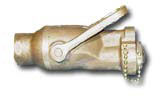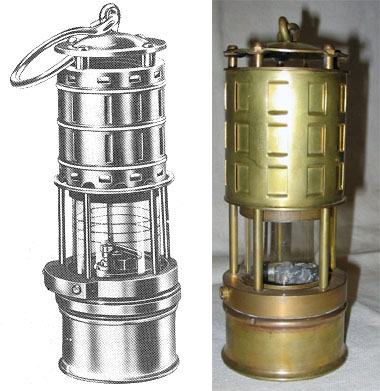 |
 |
 |
 |
| HOME |
| ABOUT US |
| PARTICIPATE |
| COLLECTIONS |
| DC EQUIPMENT MUSEUM |
| SHIP&SUBMARINE MUSEUM |
| WW II DAMAMGE REPORTS |
| SHIPBOARD CASUALTIES |
| DAMAGE CONTROL MUSEUM |
|
USS IWO JIMA (LPH 2), Boiler Room Explosion, 30 October 1990 |
|
Anatomy of a Catastrophic Boiler Accident In October 1990, as the United States prepared for war with Iraq, the majority of our U.S. Naval fleet was in the Persian Gulf. Among the ships was the USS Iwo Jima. The Iwo Jima, an amphibious assault ship built in the mid 1950s, is an aircraft carrier that carries helicopters, in addition to a large number of marine ground force troops. Routine Repairs Turn Tragic By mid October, the Iwo Jima had been operating in the Persian Gulf for approximately two months and had developed some leaks and other repair needs in the ship's 600 psi steam propulsion plant. The ship was granted permission to dock in Manama, Bahrain (a country on a group of islands in the Persian Gulf, between Qatar and Saudi Arabia) and conduct repairs. A variety of maintenance items were planned, including overhauling the main steam valve that supplies steam to one of the ship's turbine-driven electrical generators. This valve, incidentally, could also be considered a boiler-boundary stop valve. The overhaul of this large, rising-stem, bolted-bonnet gate valve was contracted to a local ship repair company, under the supervision of U.S. Government inspectors. Towards the end of October all repairs had been completed and the ship was ready to rejoin the fleet. Following a couple days of steaming in-port and equipment testing, an early morning light-off of their second boiler was planned in preparation for an 8:00 a.m. underway time. All seemed to be going well, and shortly before getting underway the engineers started their second turbine generator as a normal part of the ship's restrictive maneuvering policy. (Note: when a ship is leaving or entering port, or in an otherwise hazardous navigation situation, additional equipment is operated and additional control is assumed by the ship's bridge.) However, because of its location, this stand-by generator was rarely operated, thus the testing of its steam supply valve may have been overlooked. Consequently, very shortly after getting underway, and while the ship was still in the harbor, the recently overhauled valve began to leak. Within moments the valve was leaking badly. The engineers reported their concern to the ship's captain on the bridge. Before the captain could stop and anchor the ship, the bonnet completely blew off the valve, dumping the steam from two large power boilers into the boiler room. All 10 of the engineers in the boiler room were killed. A few somehow managed to escape the steam-filled boiler room, only to suffer for a few additional hours before finally succumbing. Amazingly, the ship managed to drop its anchor and safely stop. Later that day, tugboats pushed the Iwo Jima back into port. The Role of Inspector: A Life-Changing Event At the time of the accident, I was assigned as boiler inspector of the Commander of Amphibious Squadron Twelve. The Iwo Jima was one the ships that made up our squadron. Called upon to help oversee the enormous repair efforts that would be necessary, I was part of a team which helped train the new, all-volunteer crew to replace those who had perished. Witnessing this physical devastation and how emotionally affected the surviving crew members were made this assignment, by far, the most difficult of my naval career. It's virtually impossible to describe the scene upon entering the boiler room for the first time. It was a very eerie white color. This occurred because the velocity of the steam had sandblasted the insulation off of nearby pipes, and evenly spread the insulation onto every surface, and into every crack or crevice virtually throughout the boiler room. Glancing around the room from corner to corner, it stimulated a very scary, weary feeling in me and others, as we could picture the terror the operators might have felt as they desperately tried to shut off the boilers and escape the heat. Reaching beyond emotional factors, we knew the clean-up alone was to be a mammoth undertaking. There was no question we would have to disassemble and clean almost every piece of major machinery in the boiler room. However, the more we thought about the incident, the more difficult it was to believe that something this devastating could occur. There was no doubt that aboard that ship there were qualified contractors, inspectors, and operating personnel. Speculating the Cause of the Incident Ultimately, the cause of this catastrophic accident was the installation of nuts made of an improper material for the job. These nuts were used on the bolts fastening the bonnet to the valve's body. When the second turbine generator was started, this valve was opened to allow for steam at 600 psi and 850 degrees to pass. As this valve got hot, the nuts were expanding at a much greater rate than the bolts, and they lost the strength to contain the steam's force under the bonnet. This tragic accident should not have happened. The job specifications required the contractor to provide and verify all materials. Additionally, hold-point inspections were to be conducted by government inspectors and the ship's engineers. Obviously, something went very wrong. In our society when something goes wrong it's usually followed by an investigation to determine what went wrong. At the center of the investigation concerning those directly involved were: the mechanic who performed the repairs, for not following his work specifications; the authorized inspection agency, for not conducting hold-point inspections; and the boiler engineer in charge of the boiler room, for not conducting inspections. Beyond this, it should also be mentioned that the initial charges being considered were involuntary manslaughter. However, no willful neglect was ever found, and these charges were never filed. But this does show how serious the ramifications can become. Ultimately, what was found was that a series of mistakes and misunderstandings led to this accident. First, the mechanic wanted to replace the fasteners, but he did not have any. He also did not speak English very well. Allegedly, the mechanic asked one of the boiler room personnel for new nuts and bolts, and was given permission to look through the boiler room's spare parts bins. He selected parts that he thought would work. Secondly, with the case of the authorized inspection agency, it must be taken into consideration that there was a massive build-up of troops and ships in the Persian Gulf. It was assumed that the office was not staffed for the increased workload. Consequently, many inspections were not being conducted. And finally, the boiler room supervisor thought that one of his subordinates had conducted an inspection. Sadly, it was never concluded that an inspection had been made. If someone had conducted an inspection, possibly he was not familiar with fastener markings, nor the job specifications. The end result was that incorrect fasteners were chosen, and controlled inspections and testing were not fully accomplished. Living the Aftermath Less than two months later, the Iwo Jima was back underway. It is my hope that sharing this story reinforces how serious and important our jobs are in this industry, as well as how much the public depends on us for their safety. It is especially important in today's environment of cost-cutting and increased profit margins that safety not be sacrificed. The National Board, ASME, and jurisdictional authorities all provide many excellent codes and standards, and are available to all of us just as sufficient written specifications were available on the Iwo Jima. But they are just written specifications that by themselves don't hold water - or steam. Therefore, it is up to boiler inspectors to thoroughly conduct inspections and uphold these codes because many people are counting on us. In conclusion, we as a group must possess the conviction to stay abreast of changes in our industry, and to ask questions if we're not sure how or why something is being done. In most cases, when something doesn't look right, it's because it's not! Today, working for an insurance company and inspecting mostly low-pressure heating boilers, I still see the potential for many serious accidents. It's easy to think that this can never happen to you, but all of those involved in the catastrophic accident on board the USS Iwo Jima were professionals, and it happened to them. Let's not let it happen again. ©2002, The National Board of Boiler and Pressure Vessel Inspectors. All rights reserved. |